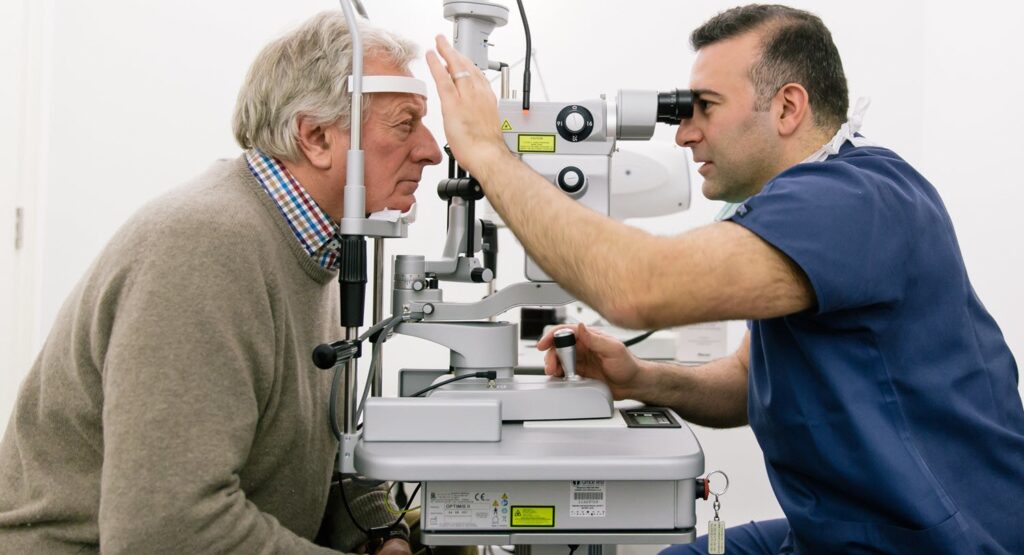Glaucoma is a serious eye condition that can lead to permanent vision loss if left untreated. It is estimated that around 300,000 Australians are affected by glaucoma, making it one of the leading causes of blindness in the country. While there are several treatment options available for glaucoma, including medication and laser therapy, surgery may be necessary in more advanced cases. However, many patients are concerned about the cost of glaucoma surgery and whether it is covered by insurance. In this article, we will provide a detailed breakdown of the cost of glaucoma surgery in Australia.
Understanding Glaucoma and Its Impact on Vision
Before delving into how much does glaucoma surgery cost in australia, it is important to have a clear understanding of glaucoma and its impact on vision. Glaucoma is a group of eye conditions that result in damage to the optic nerve, the part of the eye that transmits visual information to the brain. This damage is often caused by increased pressure inside the eye, known as intraocular pressure. Without proper treatment, glaucoma can gradually cause vision loss and, in severe cases, blindness.
What is Glaucoma?
Glaucoma is a progressive eye disease that affects the optic nerve. It is often associated with high pressure inside the eye, known as intraocular pressure. The increased pressure can damage the optic nerve, leading to vision loss. There are several types of glaucoma, including primary open-angle glaucoma, angle-closure glaucoma, and normal-tension glaucoma. Each type has its own characteristics and treatment options.
The Importance of Early Detection and Treatment
Early detection and treatment are crucial in managing glaucoma and preventing vision loss. Regular eye exams, including a comprehensive eye pressure test, can help detect glaucoma in its early stages. If diagnosed with glaucoma, it is important to follow the recommended treatment plan, which may include medication, laser therapy, or surgery. Timely intervention can help slow down the progression of the disease and preserve the remaining vision.
One of the challenges in managing glaucoma is that it often does not present with noticeable symptoms in its early stages. This is why regular eye exams are so important, as they can detect glaucoma before significant vision loss occurs. During an eye exam, the ophthalmologist will not only check the intraocular pressure but also evaluate the optic nerve and visual field. These tests help determine the extent of damage caused by glaucoma and guide the appropriate treatment plan.
When it comes to treatment, the goal is to lower the intraocular pressure and prevent further damage to the optic nerve. This can be achieved through various methods, depending on the severity of the condition. Medications, such as eye drops, are often prescribed to reduce intraocular pressure. In some cases, laser therapy may be recommended to improve the drainage of fluid from the eye, thus lowering the pressure. Surgical options, such as trabeculectomy or tube shunt implantation, may be considered for more advanced cases or when other treatments are ineffective.
It is worth noting that glaucoma is a chronic condition that requires ongoing management. Even with successful treatment, regular follow-up visits are necessary to monitor the progression of the disease and adjust the treatment plan if needed. Compliance with medication and lifestyle modifications, such as avoiding activities that increase intraocular pressure, can also play a significant role in preserving vision and preventing further damage.

Types of Glaucoma Surgery
When nonsurgical treatments fail to control intraocular pressure, glaucoma surgery may be considered. There are several types of glaucoma surgery available, each targeting different aspects of the eye to lower intraocular pressure.
Glaucoma, a group of eye conditions that damage the optic nerve, is often associated with increased intraocular pressure. If left untreated, glaucoma can lead to vision loss and even blindness. Glaucoma surgery aims to reduce intraocular pressure to prevent further damage to the optic nerve and preserve vision.
Laser Trabeculoplasty
Laser trabeculoplasty is a minimally invasive procedure that uses a laser to improve the drainage of fluid from the eye. The laser is applied to the trabecular meshwork, the drainage angle of the eye, to enhance its function and reduce intraocular pressure. This procedure is typically performed in an outpatient setting and does not require any incisions.
By targeting the trabecular meshwork, laser trabeculoplasty helps to increase the outflow of aqueous humor, the fluid that nourishes the eye. This can help to lower intraocular pressure and prevent further damage to the optic nerve. Laser trabeculoplasty is often used as a first-line surgical treatment for open-angle glaucoma.
Trabeculectomy
Trabeculectomy is a surgical procedure that involves creating a tiny flap in the sclera, the white part of the eye. This flap allows excess fluid to drain out, reducing intraocular pressure. A small reservoir, called a “bleb,” is also created to collect the fluid. Trabeculectomy is typically performed under local anesthesia and requires a short hospital stay.
During trabeculectomy, the surgeon carefully creates a new drainage channel to bypass the natural drainage pathway that may be blocked in glaucoma. By allowing fluid to drain out of the eye more effectively, trabeculectomy helps to lower intraocular pressure and protect the optic nerve from damage.
Glaucoma Implant Surgery
Glaucoma implant surgery, also known as tube shunt surgery, involves the placement of a small tube or shunt inside the eye to improve fluid drainage. The tube is connected to a small reservoir, which helps regulate the flow of fluid. This surgery is usually reserved for more complicated cases of glaucoma or when other surgical options have failed.
In glaucoma implant surgery, the tube or shunt provides a new pathway for the aqueous humor to drain, reducing intraocular pressure. By bypassing the natural drainage system of the eye, this procedure can be effective in managing glaucoma in patients who have not responded well to other treatments. Glaucoma implant surgery is often considered when traditional surgical methods are not sufficient to control intraocular pressure and preserve vision. know more about traditional surgical methods at https://pubmed.ncbi.nlm.nih.gov/3206242/
Factors Influencing the Cost of Glaucoma Surgery
The cost of glaucoma surgery can vary depending on several factors. Understanding these factors can help patients make informed decisions regarding their treatment options.
Glaucoma surgery is a crucial procedure aimed at managing the intraocular pressure in the eye to prevent further damage to the optic nerve. Beyond the medical necessity, the cost of the surgery is influenced by various factors that patients should consider.
Type of Surgery
The type of glaucoma surgery performed can greatly influence the cost. Laser trabeculoplasty is generally less expensive than trabeculectomy or glaucoma implant surgery. The complexity of the procedure, the surgeon’s fee, and the hospital fees also contribute to the overall cost.
Trabeculectomy, a traditional glaucoma surgery involving the creation of a new drainage channel in the eye, is often more expensive due to its intricate nature and longer recovery period. On the other hand, laser trabeculoplasty, which uses a laser to improve fluid outflow, is usually a quicker and more cost-effective option for certain patients.
Surgeon’s Experience and Reputation
The experience and reputation of the surgeon can also impact the cost of glaucoma surgery. Surgeons with extensive experience and a strong reputation may charge higher fees due to their expertise and track record of successful outcomes.
Choosing a skilled and reputable surgeon is paramount when considering glaucoma surgery. While experienced surgeons may come with a higher price tag, their expertise can significantly affect the success and safety of the procedure, potentially reducing the need for additional interventions in the future.
Geographical Location
The cost of glaucoma surgery may vary depending on the geographical location. In major cities, where the cost of living and overhead expenses are higher, the cost of surgery may be higher compared to regional areas.
In urban centers with advanced medical facilities and higher demand for specialized services, the cost of glaucoma surgery is often elevated to accommodate the expenses associated with running a practice in such locations. Patients in rural or suburban areas may find more affordable options for glaucoma surgery without compromising on quality, as overhead costs are generally lower outside metropolitan regions. Click here to learn more about compromising on quality.
Average Cost of Glaucoma Surgery in Australia
While the cost of glaucoma surgery can vary, we can provide a general breakdown of the average expenses involved.
Cost of Initial Consultation
The first step in determining the best course of treatment is an initial consultation with an ophthalmologist or glaucoma specialist. During this consultation, the doctor will thoroughly examine your eyes, review your medical history, and discuss your symptoms. They may also perform additional tests, such as measuring your intraocular pressure and assessing the health of your optic nerve.
The cost of this consultation can range from $100 to $300, depending on the doctor and location. It is important to note that some doctors may bulk bill or offer reduced fees for patients with a valid Medicare card.
Pre-surgery Tests and Procedures
Prior to glaucoma surgery, additional tests and procedures may be necessary to assess the condition of the eye and its suitability for surgery. These can include visual field testing, optical coherence tomography, and corneal thickness measurement.
Visual field testing involves measuring your peripheral vision to determine if there are any areas of vision loss. Optical coherence tomography uses light waves to create detailed images of the structures within your eye, allowing the doctor to assess the health of your optic nerve. Corneal thickness measurement helps determine the appropriate surgical technique for your specific case.
The cost of these tests can range from $100 to $500, depending on the complexity and number of tests required. Some of these tests may be covered by Medicare, but it is important to check with your doctor and insurance provider to understand the extent of coverage.

Surgery and Hospital Fees
The cost of glaucoma surgery itself can vary depending on the type of procedure and the hospital where it is performed. Trabeculectomy and glaucoma implant surgery are two common surgical techniques used to treat glaucoma.
Trabeculectomy involves creating a new drainage channel in the eye to allow excess fluid to drain, thus reducing intraocular pressure. Glaucoma implant surgery, on the other hand, involves placing a small device in the eye to help regulate the flow of fluid.
On average, the cost of trabeculectomy or glaucoma implant surgery can range from $3,000 to $5,000. This includes the surgeon’s fee, anesthesia, operating room expenses, and follow-up visits. It is important to note that some private health insurance policies may cover a portion of these costs, but the level of coverage can vary. It is recommended to contact your insurance provider to determine the specifics of your coverage and any out-of-pocket expenses.
Post-surgery Care and Medication
After glaucoma surgery, patients may require post-operative care, including follow-up visits and medications. These visits are crucial to monitor the healing process, check the intraocular pressure, and ensure that the surgery was successful in managing the glaucoma.
The cost of post-surgery care can range from $100 to $500, depending on the number of visits and the necessary medications. It is important to follow your doctor’s instructions regarding the use of medications and attend all scheduled follow-up visits to ensure the best possible outcome.
In conclusion, glaucoma surgery is an effective treatment option for managing intraocular pressure and preserving vision. The cost of glaucoma surgery in Australia can vary depending on factors such as the type of surgery, surgeon’s experience, and geographic location. It is important for patients to have a detailed understanding of the costs involved and to consult with their healthcare provider and insurance provider to determine the best course of action.
Read more
